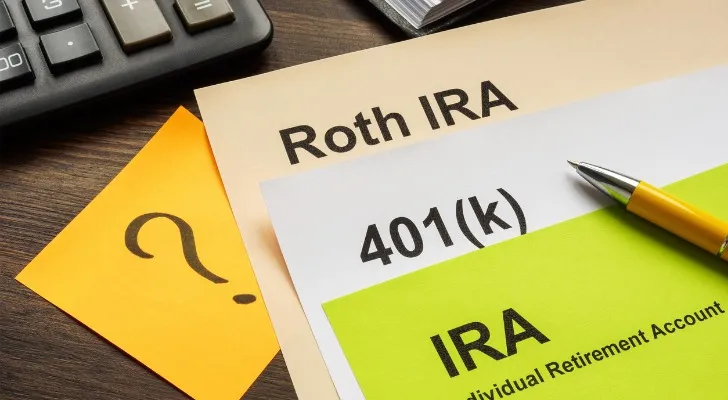An IRA transfer refers to the movement of tax-deferred money that is not required to be reported to the IRS on your tax return. This typically occurs when you complete a direct trustee-to-trustee, or account-to-account, transfer between two similar types of retirement accounts. This type of IRA transfer is sometimes referred to as a “non-reportable IRA rollover,” but such a term is technically inaccurate. An IRA rollover, on the other hand, must be reported to the IRS on your tax return. This often involves a distribution of funds from one IRA custodian to you, and then you have a limited time to deposit the funds into another eligible retirement account to avoid taxes and penalties.
If you are considering an IRA rollover, a financial advisor can walk you through options to lower your taxes.
What Is an IRA Rollover?
An IRA rollover is a financial strategy that involves the transfer of funds from a retirement account into a traditional or Roth IRA. This process allows for the continued tax-deferred growth of your retirement savings, providing significant benefits when planning for the future.
An IRA rollover serves as a strategic move that helps to consolidate retirement accounts, manage tax liabilities and potentially access a wider range of investment options.
What Is a Reportable Event?
When you make an IRA rollover, the IRS requires that you deposit that money within a specific timeframe to avoid a tax penalty. If you fail to do so, the whole amount can be treated as a taxable distribution, which would make it a reportable event.
When making an IRA rollover, you should note that there are two types of retirement plan rollovers.
The first is a direct rollover, in which the company that manages your retirement account transfers your money to a new account for you.
The second is an indirect rollover, in which the company managing your account writes you a check for the amount that you want to distribute. In this example, you will need to deposit the money within 60 days to avoid getting taxed and a possible 10% penalty if you are under age 59 ½.
Some amounts are ineligible to be rolled over into an IRA. These include required minimum distributions (RMDs) and hardship distributions, among others. You should note however that the IRS could also waive the 60-day rollover requirement based on certain circumstances that are beyond your control.
What Is a Non-Reportable Event?

A non-reportable event refers to a financial transaction or event that does not need to be reported to tax authorities on your tax return. In many cases, these events involve transactions that don’t result in a taxable gain or loss, and therefore, they don’t have an impact on your taxable income for the year.
Within certain retirement accounts, including traditional IRAs, 401(k)s and Roth IRAs, certain transactions will allow you to move funds between similar types of retirement accounts (e.g., traditional IRA to traditional IRA), as a non-reportable event, as long as the funds are handled appropriately.
While both IRA transfers and IRA rollovers involve moving funds from one retirement account to another, they are used in slightly different situations and can have different tax implications.
Here are four common reasons why you may want to use an IRA transfer:
- Direct movement: An IRA transfer involves directly moving funds from one IRA custodian (financial institution) to another. The account holder doesn’t physically receive the funds; they are transferred directly between custodians.
- No tax withholding: There are generally no tax implications or withholding taxes when performing a direct IRA transfer.
- No time limit: IRA transfers don’t have a time limit for completion. You can take your time to complete the transfer without worrying about a specific deadline.
- No reporting requirements: IRA transfers are not reported on your tax return because the funds move directly between custodians. As a result, there’s no need to report this transaction to the IRS.
And, here are four things to consider when making an IRA Rollover:
- Temporary possession: An IRA rollover involves receiving the funds from one retirement account and then depositing them into another eligible retirement account within a specified time frame (usually 60 days).
- Potential tax withholding: If you receive the funds directly (as in the case of a 60-day rollover) instead of a direct custodian-to-custodian transfer, there might be mandatory tax withholding. The IRS requires the custodian to withhold 20% of the distribution amount for potential tax payments. To complete the rollover without tax consequences, you need to replace the withheld amount with your own funds.
- 60-day limit: For a 60-day rollover, you have 60 days from the date you receive the distribution to deposit the funds into another eligible retirement account. If you miss this deadline, the distribution could be considered taxable income, subject to early withdrawal penalties if applicable.
- Reporting requirement: If you complete a 60-day rollover, you need to report it on your tax return. You’ll receive a Form 1099-R from the distributing custodian, indicating the distribution. You’ll need to include this information on your tax return and indicate that you completed a rollover within the 60-day window.
Bottom Line
IRA rollovers can allow you to move retirement funds between accounts while potentially deferring taxes. If you’re considering this financial move, remember to complete it within the stipulated 60-day window. You may also consider an IRA transfer as an alternative, which is non-reportable and direct.
Tips for Retirement Investing

- A financial advisor can help you create an investment plan for your retirement savings. SmartAsset’s free tool matches you with vetted financial advisors who serve your area, and you can have a free introductory call with your advisor matches to decide which one you feel is right for you. If you’re ready to find an advisor who can help you achieve your financial goals, get started now.
- Consider the tax laws of the state you live in when planning for retirement. Some states have retirement tax laws that are very friendly for retirees, but others don’t. Knowing which laws apply to your state, or to a state you hope to move to, is key to getting ahead on retirement planning.
Photo credits: ©iStock.com/designer491, ©iStock.com/pixdeluxe, ©iStock.com/golfcphoto
